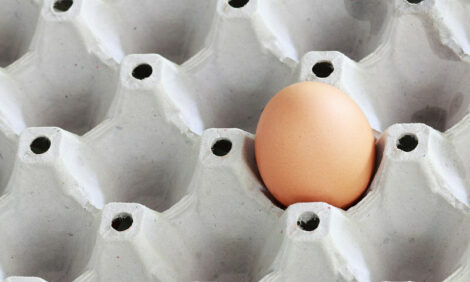



Overview of India's Diverse Egg Sector
INDIA - An overview of egg production in India by Dr T. Kotaiah, Managing Director of Indbro Research & Breeding Farms Pvt. Ltd of Hyderabad.There is no corporate agriculture with mechanisation in India.
Basic agriculture is becoming tough and unviable for farmers with medium-sized and small land holdings with increasing labour costs.
Poultry farming is turning to be a better option to generate more income from the same land. Low-cost poultry housing requires small area and less water generating higher output. Open-sided broiler houses for contract rearing and open-sided, raised-floor houses with cages for layer farming is a better option for small holdings near urban areas.
Grain production has been increasing in India. Maize production is expected to exceed 22.5 million metric tons (MMT) and soybeans more than 9MMT.
The Government of India permits export of grains and soybeans and has announced a 'Minimum Support' price to prevent distress selling during the crop season and exploitation by middle men. This has resulted in increasing the price of grains and soya. Higher farmer prices have kept large exports in check to some extent because prices are not competitive on the open world market. Indian maize would cost US$217 where as the prices of South America are below $200 during current crop season. Similarly, the Indian market price for soya DOC is more than $500, whereas international prices are under $500 per metric ton.
The growth of agriculture in India is less than three per cent. Livestock sector registers much higher growth than basic agriculture. Poultry production is much more organised than other sectors and is growing at 10 to 12 per cent every year.
Broiler farming and chicken production is moving into the hands of big integrator companies investing huge amounts of money. There is no option other than contract farming for the single unit broiler farm owner.
India is the third largest egg producer in the world after China and the US. India places above 220 million commercial layer chicks, mostly white egg layers. Layer farming has been concentrated around few production areas in the country. The layers are housed mostly in the open-sided houses. There has been a shift to mechanised feeding and mechanical egg collection resulting in the growth of the individual units.
Feed prices have been increasing due to rise in grain prices. Indian poultry farmers use low-energy, least-cost feed formulations and produce excellent results. Hen-housed egg production of many units is more than 300 in a laying cycle of 52 weeks and many farmers achieve 310 eggs.
The export of eggs from India is dismal and inconsistent. Three egg-breaking plants are also not comfortable in export of liquid egg products. The growing population of India and increasing acceptability of eggs in the diet of all people in India is absorbing all the production comfortably. Eggs are included in midday meal schemes of schoolchildren and hospitals, which is increasing the consumption.
Though the prices of eggs are going up, they are cheaper than many other places in the world. The eggs are sold in numbers and for around six US cents each, while the feed cost per egg is around four US cents. .
The larger layer farms are not expanding further because of disease threat, labour costs, environmental concerns and local issues. The layer units are coming up in new areas. The big farmers are opting to move out and establish units nearer to consumption centres to reduce both transportation costs and disease risk.
Cage housing with mechanisation is the preferred option. While the medium-sized units are opting for open sided houses with California type housing, larger units with more than 100,000 birds are experimenting with multi-tier closed houses with mechanised feeding, egg collection and manure drying. The recent poultry expo, Poultry India 2013, in November 2013 attracted cage manufacturers from all over the world to India exhibiting the most intensive cage farming options.
The egg production in the country is going to go up and the per-capita availability of eggs which is around 63 now will reach to 100 before 2020.
With high egg production with minimum nutritional inputs, today's layer bird is becoming a sensitive machine. The bird needs to be more adaptive and rugged. The layer bird to suit the Indian market should be very rugged, adapted to a harsh climate and low feed density feed, laying more medium-sized eggs and having a good immune system.
Alternative egg production systems are also gearing up, following encouragement from the government; more layer birds are being distributed in the rural areas. In states with small land holdings and less resources like Kerala in the south and the north-east of India, there could be a boom in rural egg production. This will come from brown layers, which are more robust and so better suited to village conditions.








